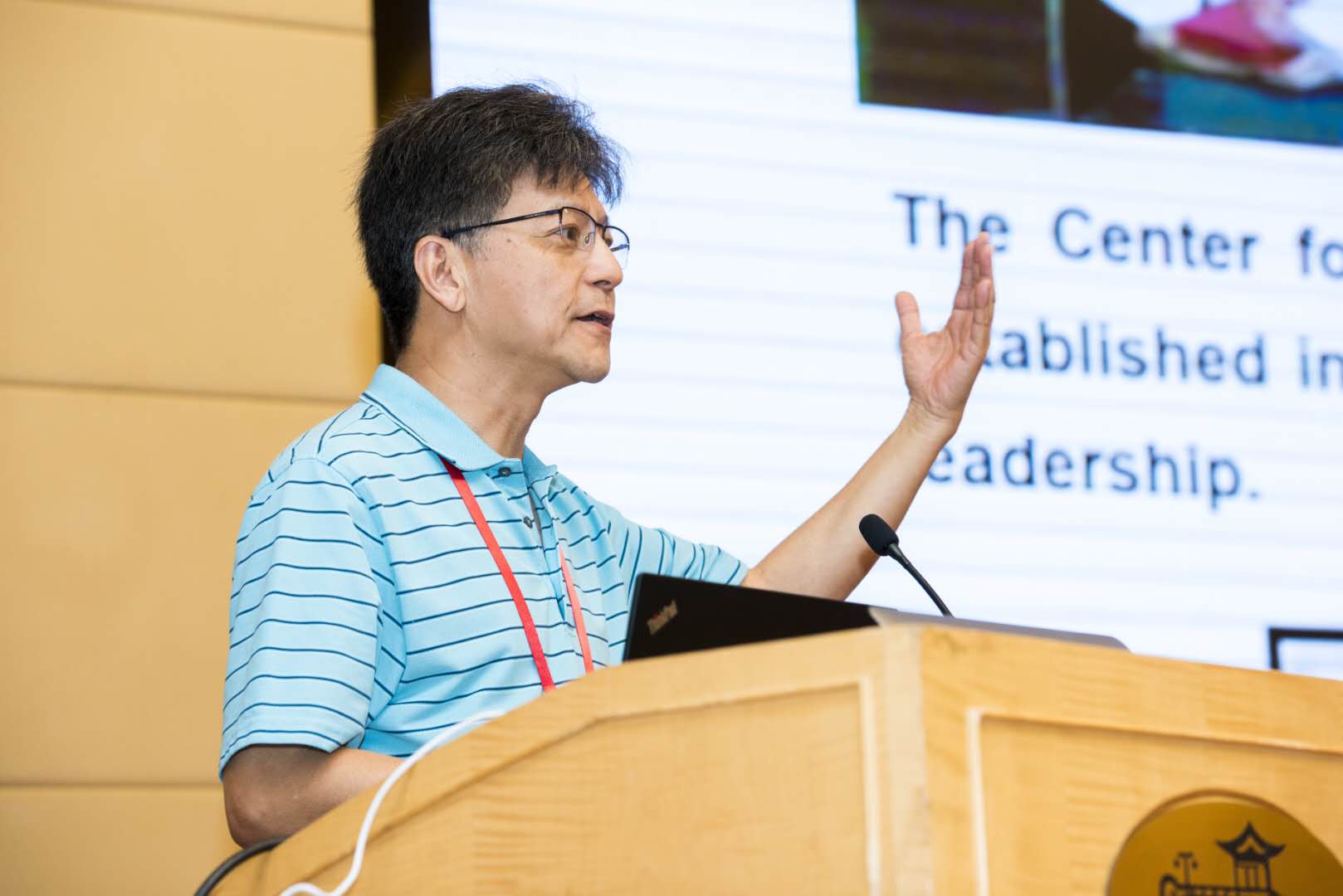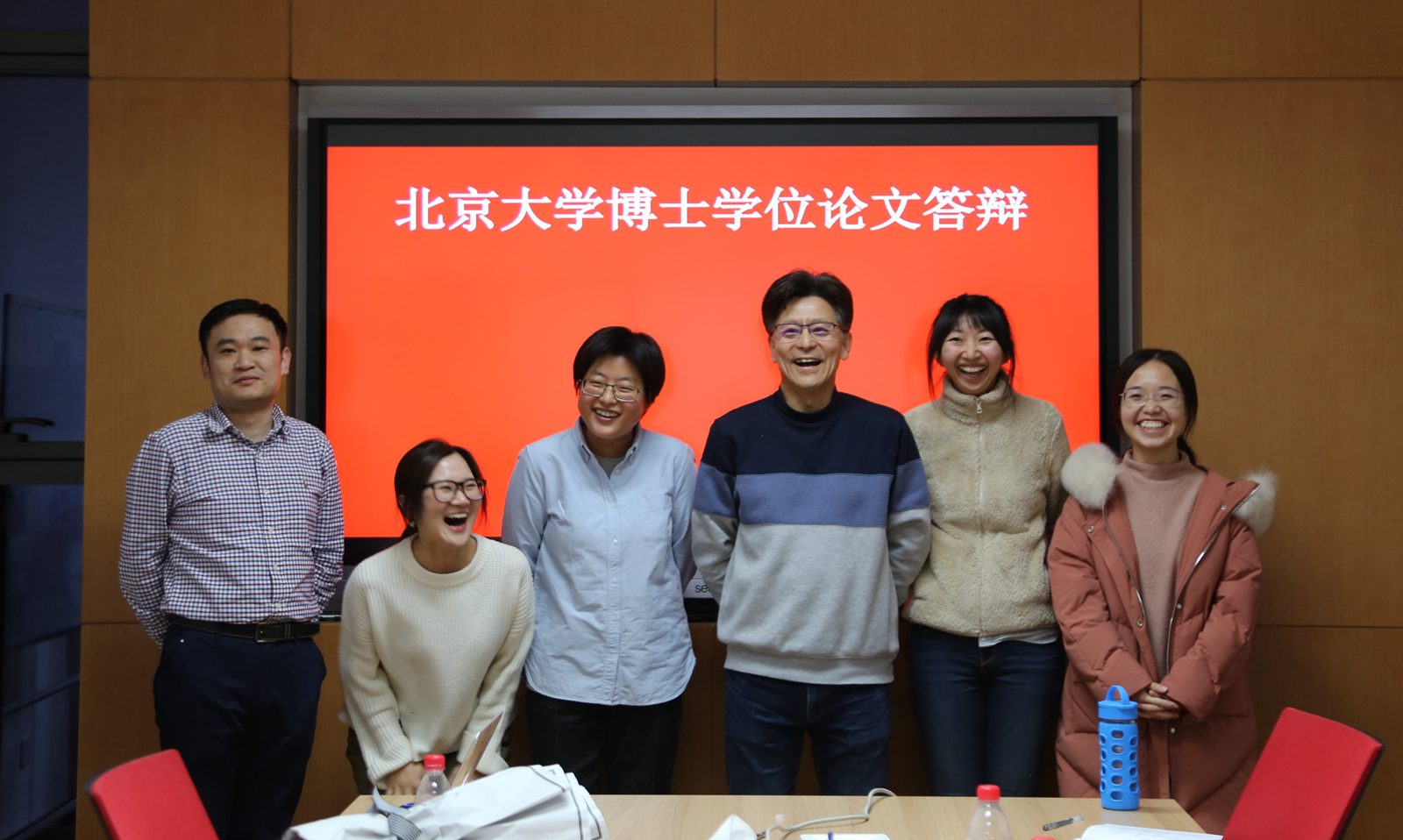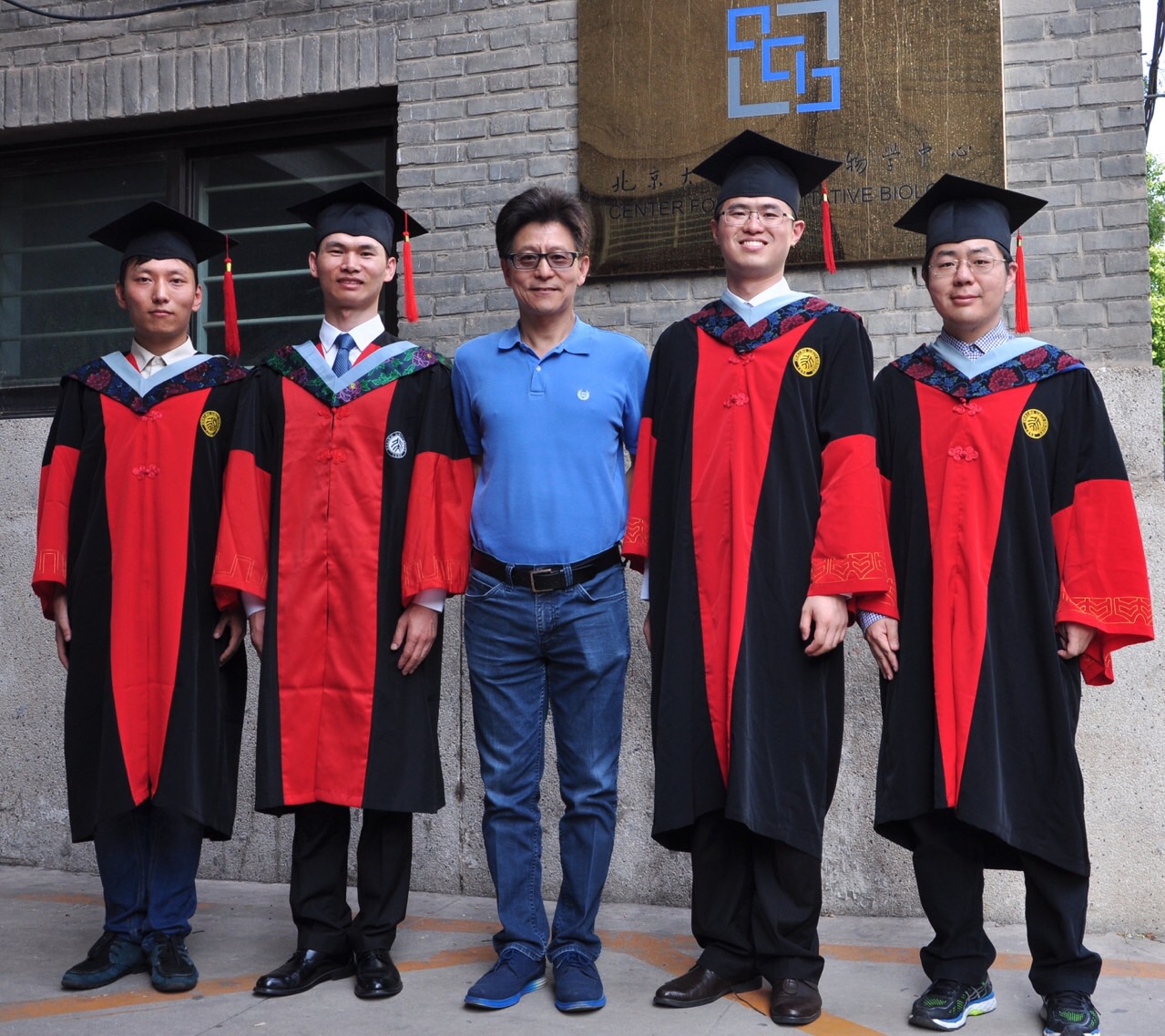[New Academicians 2019] Tang Chao: A self-motivated scientist pursues interdisciplinary excellence
Jan 07, 2020
Editor's Note: In November 2019, a total of seven academics from Peking University were elected as academicians, with five becoming members of the Chinese Academy of Sciences (CAS) and two being members of the Chinese Academy of Engineering (CAE). This article is the fourth installment in a five-part series featuring the academic career and research achievements of these newly elected academicians.
Peking University, Jan. 7, 2019: Tang Chao, chair professor of physics and quantitative biology at Peking University, was elected as a member of the Chinese Academy of Sciences (CAS) in November 2019. Tang is a pioneer who challenges boundaries and pursues interdisciplinary excellence. As a physicist, Tang, along with Per Bak and Kurt Wiesenfeld, proposed the concept and theory of self-organized criticality; as a quantitative biologist, he tries to explain life’s secrets with quantitative methods.
 Tang Chao
Tang Chao
Early years as a physicist
In youth he never lacked enthusiasm and interest in physics. He was captivated by “One Hundred Thousand Whys”, a popular science book series in China, especially the Physics volume. He took Gaokao in 1977 and was admitted by the University of Science and Technology of China (USTC) where he majored in mechanics rather than physics. However, physics intrigued him so much that he often audited physics classes. His perseverance and hard work paid off - in 1981, he grasped the opportunity to pursue his doctorate degree in physics in the University of Chicago through the China-U.S. Physics Examination and Application (CUSPEA) program organized by Professor Tsung-Dao Lee. Tang was delighted in remembering later on that “both Gaokao and CUSPEA have changed my life.”
In the University of Chicago, Tang was interested in explaining power-law distributions theoretically. By then there were many empirical observations of power-law distributions in space and time, such as the brightness of stars, the flowrate of a river, the energy release in earthquakes, the magnitude of forest fires, etc. But no one gave these phenomena a general and unified explanation. Tang was intrigued by the ubiquity of these wide-spreading phenomena. He continued to work on this problem in Brookhaven National Laboratory (BNL) as a postdoc after graduation. In 1987, Tang, with his colleagues, introduced the concept of the self-organized criticality (SOC). In the seminal paper, they proposed the classical Bak-Tang-Wiesenfeld sandpile model as an example of a dynamical system displaying SOC. The discovery of SOC is tremendously influential, which was considered a prototypical example of disruptive science. Tang was proud of himself not only because “SOC provides a new mathematical and theoretical framework for a wide range of complex problems in nature”, but also because he “studied this problem from the scratch, motivated by enthusiasm and interest.”
 Tang making a presentation in an international conference
Tang making a presentation in an international conference
Challenge boundaries: Apply quantitative approaches to biological problems
SOC earned Tang very high esteem as a physicist but his interest in solving scientific problems was not restricted to the traditional domains of physics - by the early 1990s, as a principal investigator (PI) in NEC Labs, he was looking for new problems. Biology intrigued him. “I found many biological problems speculative and need to be explained theoretically, yet no unifying mathematical formalism has been elaborated so far.” Thus, he tried to get his head around quantitative biology. But the first step is always the hardest- “I worked on statistical physics in my early career and my colleagues in NEC Labs came from physics and computer science without biology background. So, I had to study biology independently and confronted with many difficulties.”
Things turned well after six months to one year. A research talk about protein folding, given by a professor of physics at Stanford University, inspired him a lot. He tried to use statistical physics to explain why and how nature has selected protein folds. After years of efforts, he with other colleagues, put forward the theory that protein structures are preferred in nature because they are readily designed (1996) and the "designability principle" behind nature's selection of protein folds (1998). From his personal experience, Tang believes that “Opportunity knocks for the prepared. Had I not speculated on biological problems before the research talk, I wouldn’t come up with the ideas.”
In Tang’s eyes, quantitative biology is a very interdisciplinary field which brings together physicists, mathematicians, engineers and biologists. The central theme and goal of quantitative biology is to apply, develop and integrate theoretical, computational and experimental methods to address key biological questions. “Life science is more complex and complicated than physical science. But since living systems are part of nature, I speculate that some fundamental principles play a role in life, and that life has evolved tricks that utilize the physical world.” Just like Isaac Newton who invented calculus in order to explain planetary motion, Tang believes that quantitative biology also urges the creation of unique mathematical language to study the life’s secrets. “Of course, the progress in life science will in turn promote the development of physics and mathematics.”
Pursue interdisciplinary excellence at Peking University
In late 1990s, Tang came back to China every summer to attend academic meetings where he met with many excellent faculty members from Peking University. They came from very different backgrounds but shared common interest in quantitative studies of biological systems. With the support from Professor Tsung-Dao Lee and PKU leadership, Tang helped establishing Center for Theoretical Biology (CTB) in 2001 and was invited to be the director of CTB.
Since then, Tang came back more frequently and stayed for longer time every year so as to instruct students at CTB and promote interdisciplinary studies in Peking University.
 Tang and his students
Tang and his students
In 2011, Tang officially returned to Peking University as a full-time faculty. Reflecting his decision on returning, he expressed his gratitude to his family: “It was a turning point in Chinese history when it faced both challenges and opportunities. I felt the urge to join the tide of change and to make some contributions. It is not an easy decision. I want to thank my wife and my two children who returned China with me. My wife was always behind me, and my children though not fully understood my decision, still supported me unconditionally.”
Tang continues his career in quantitative biology and biological physics as Chair Professor at Peking University, executive dean of the Academy for Advanced Interdisciplinary Studies (AAIS), founding director of Center for Quantitative Biology (CQB) at AAIS, and director of Academic Committee of Center for Life Sciences (CLS). He devotes himself to interdisciplinary researches and education at Peking University. After years of effort, AAIS has been steadily growing into a mature organization. Tang regards AAIS as “a leading institution in China to cultivate young minds with interdisciplinary perspectives”. However, compared with most technologically advanced universities abroad, he thinks “the current funding system and evaluating system show that Chinese academia as a whole are still weak in thinking across traditional boundaries between disciplines or schools of thoughts. Thus, Peking University and AAIS still has a long way to go in promoting interdisciplinary research and education.”
Research management: freedom keeps creativity flowing
Free exploration is what Tang benefited most from Professor Leo Philip Kadanoff, his doctoral advisor at University of Chicago. “Instead of poking his nose into students’ own projects, Professor Kadanoff created an excellent research atmosphere and cultivated our taste for science by showing good scientific research examples and structuring our critical thinking.”
Tang tries to pass on this idea in his lab. He adopts “a hands-off approach to direct students” because he believes that freedom keeps creativity flowing in his lab. “I let my students explore their research interest freely by themselves. It can be really painful experience in the beginning, but they’ll learn how to do research independently.” Moreover, CQB holds “Happy Hour” events every Thursday afternoon where lab members and PIs can exchange their ideas, expand their own knowledge and spark creativity.
 Tang and his Ph.D. students
Tang and his Ph.D. students
In terms of evaluation, CQB and CLS refuse the blind pursuit of papers, titles, degrees and awards. Instead, they adopt the practice of inviting international experts every five years to evaluate whether members have done something interesting and meaningful with an open standard.
Outside his lab, Tang believes that China has made considerable progress in cultivating creativity and innovative spirit society widely. But there is still room for improvement in terms of celebrating difference and encouraging diversity. Tang observes that “promoting creativity is far more complex than just supporting free exploration and encouraging idea-exchanging in research labs. It is a complicated issue with joint influence from cultural factors, social notions as well as evaluating systems.”
Written by: Huang Yadan, Ye Yimeng
Edited by: Zhang Jiang
Photo credit to: Wang Tiantian



